The cuirass is a piece of armour that covers the torso – a forerunner of the bullet-proof vest. It was made from tough metal such as bronze or iron to protect the wearer as he went into battle. The fashion designer Alexander McQueen borrowed the shape of the cuirass but made a few tweaks to the design. His cuirasses were designed to emphasise the curves not of male muscles but of female breasts. Instead of metal, McQueen chose other materials. He made breastplates from plaster of Paris, leather and Perspex. For fashion curator Andrew Bolton, the McQueen cuirass that best captures the “tragic, poetic beauty” of his designs is one made of glass: a stunning object but a self-defeating form of armour. If struck, far from fending off the aggressor, a glass cuirass would shatter and pierce the wearer. Just before she went on the runway wearing one of McQueen’s glass corsets, the model Laura Morgan was warned, jokingly, “If you trip, you’re a goner!”
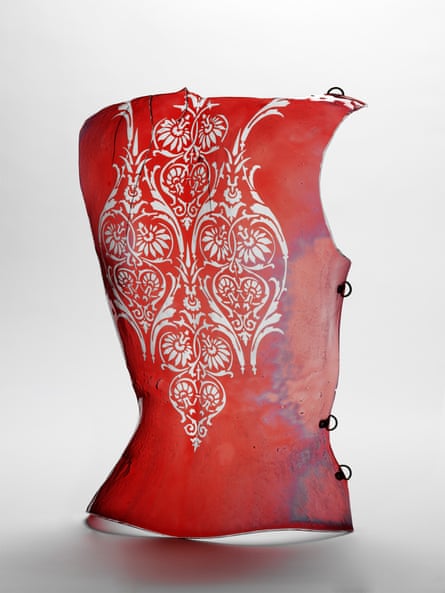
The glass cuirass – from the 2001 collection Voss – is one of the many astonishing objects that will be on display in this month’s Alexander McQueen: Savage Beauty, which arrives at the V&A from the Metropolitan Museum of Art in New York in an expanded and edited form. At the heart of the exhibition is a cabinet of curiosities including strange wonders such as a coiled corset made of multiple parallel rings of aluminium, and a black-horned headpiece designed during the period when McQueen, who killed himself in 2010, was head designer for Givenchy. During its first run at the Met in 2011, Savage Beauty’s popularity surprised everyone, including the museum’s curators and McQueen’s former colleagues. It attracted more than 660,000 visitors in three months, many of whom queued for five hours to get in. Tom Campbell, the director of the Met, had expressed misgivings about staging the exhibition so soon after McQueen’s suicide: would it seem premature? He was won over by Bolton, a longtime McQueen obsessive who assembled the exhibition as an “unabashed and unapologetic love poem” to the designer’s talent. Bolton’s faith in his subject was justified. As he writes in the comprehensive catalogue to the V&A exhibition: “Most fashion is not art, but there was a consensus of opinion among critics and visitors that McQueen’s work was art.” On the final day of the show in New York, the Met stayed open until midnight to allow all the people in the queue a chance to see it. Bolton told the New Yorker that the long lines stretching down Fifth Avenue “broke my heart, because I knew McQueen would have been so happy to see it”.
The opening of Savage Beauty in Britain provides a chance to reassess the designer in his home town. McQueen was born in Lewisham in 1969 and grew up in Stratford, the “pink sheep”, as he put it, of a large East End family. He loved drawing, dressing up – to frighten his mother, he would put a stocking over his head – and doing synchronised swimming with his sisters. As an adult, he was often deeply conflicted about the art form in which he chose to express himself, despising the fashion world for its phoniness, body fascism and built-in obsolescence, and saying he wished he could be a war photographer instead. But the signs were there that he might be good at designing clothes. He advised his sisters on what to wear for nights out and, aged three, he picked up a crayon and drew a picture of Cinderella “with a tiny waist and a huge gown” on a bedroom wall. He continued to use nipped-in waists and huge shoulders all the way through to the raven dress in his Horn of Plenty collection, the signature piece at the V&A, a breathtakingly weird and romantic confection made of duck feathers dyed black.
McQueen’s mother Joyce sometimes took him and his siblings – he was the youngest of six – to the V&A on Sundays, and later, as a designer, he often explored the museum’s archives. For McQueen’s work to be on display there as a now-established part of British fashion history feels like a homecoming, even if London was a place where his talent was not always appreciated. “London gives me fuck all,” he remarked in 1993 when, despite rave reviews from the glossies in New York, he was living in a flat in Dagenham and couldn’t afford to fix the rotten front tooth he had recently broken while eating a Big Mac. For a long time, McQueen’s sole champion in the British fashion world was the eccentric Vogue stylist Isabella Blow, whose own suicide would precede his by a few weeks. It has often been said that Blow was so impressed by McQueen’s graduation show at Central St Martin’s in 1992 that she bought the lot for £5000. Actually, this isn’t quite true; Blow didn’t have enough money for the whole collection. Instead, McQueen would call at her Condé Nast offices every couple of weeks with a bin bag full of clothes, and she would buy as many as the cashpoint would allow. It was Blow who urged him to change his name from Lee to Alexander, because it sounded more aristocratic.
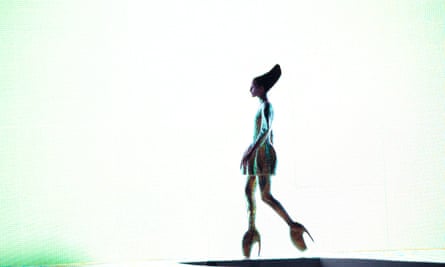
Her devotion to McQueen was not initially shared by others in the London fashion crowd, who did not quite know what to make of this awkward son of a cab driver. Some called him the “elephant terrible”, a jab at his chubbiness. It took time for London fashion to appreciate the virtuosity and craft of McQueen’s tailoring: the way he could take a giant pair of scissors and, as his colleague Sarah Burton remarked, “create a dress on the spot, embroidery here, fabric there, chop this”. When he arrived in Paris as head designer at Givenchy in 1996, venerable couturiers were astonished at his technique, his dexterity with hems and seams, something he had learned during an apprenticeship on Savile Row. As Dana Thomas recounts in her richly researched and pacey account of the careers of McQueen and John Galliano, the staff in the Givenchy atelier were initially shocked by his “forthrightness”. He didn’t bother to use the formal vous, or even to speak French. Yet when Catherine Delondre, the head of the atelier, saw the garments emerging from the workshop, “we thought, this is real couture”. For Thomas herself, a veteran fashion correspondent for American newspapers, it is obvious that, while Galliano was a creative costume-maker, McQueen was something more, a “once-in-a-generation talent” who used “fabrics and embellishments” to create sculptures “that happened to be worn”.
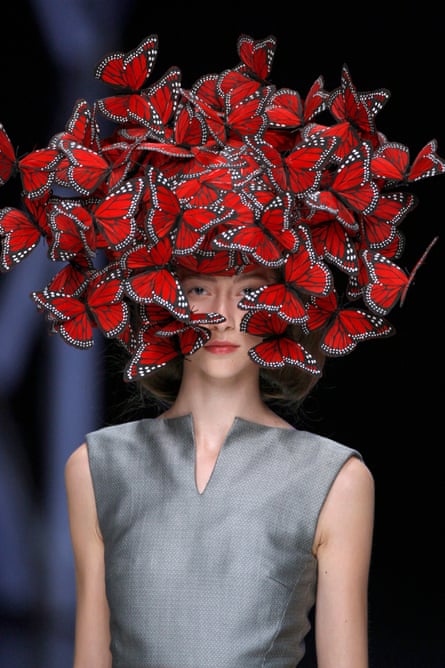
But in London, in the early 1990s, McQueen was sometimes dismissed as a provocateur. He first created a version of his signature “French cut” trousers for the 1993 collection Taxi Driver, inspired by the Martin Scorsese film as well as his dad’s profession. They were better known as bumsters, with a waistband cut 5cm below the hipsters of the 70s. By radically lowering the waistline, these new trousers brought the emphasis on to the ogee curve at the bottom of the spine, the place that McQueen believed to be “the most erotic part of anyone’s body, man or woman”. At the time, Vogue editor Alexandra Shulman disdained McQueen’s bumsters as “all about titillation”. She had a point: they were an adaptation of the crotch-emphasising trousers of gay porn, though their appeal endured long after the initial shock value. The low-rise, flat-fronted bumster – and its more extreme cousin, the “cuntster” – would change the silhouette of women’s trouser tailoring for the next 20 years.
The other grievance repeatedly levelled at McQueen’s work in Britain – by the press more than the fashion world – was that it was misogynist. For the Daily Mail he was “The Designer Who Hates Women”. In “Highland Rape” – which McQueen insisted was only about the rape of Scotland by England and not to be taken literally – he showed tangle-haired women whose beautifully tailored jackets and lace dresses were ripped, as if they had been ravaged. In La Poupée he put the black model Debra Shaw in a manacle, which disturbed many observers because of the obvious connotations of slavery, though Shaw herself said she felt as if she were in a picture frame. In Eshu (Autumn/Winter 2000), named after a mischievous spirit in the Yoruba religion, he devised a silver mouthpiece, designed to look like tribal jewellery, worn by a model whose ears drooped under the weight of silver hoops as big as dinner plates. The mouthpiece, while silencing her, forced her to bare her teeth. “Vicious spikes framed her nose, the tips perilously near her eyes,” wrote Joan Smith in the Independent. “What on earth was going through the mind of the man who designed it?”
We will never know what was going through McQueen’s mind. But to see the clothes displayed on mannequins in Savage Beauty, rather than on real women, it becomes obvious that they were not designed to degrade or attack the wearers. McQueen vigorously resented the notion that his clothes were anti-women, remarking that “When you see a woman wearing McQueen, there’s a certain hardness to the clothes that makes her look powerful … It kind of fends people off.” From his graduation show Jack the Ripper Stalks his Victims onwards, he was preoccupied by the idea of predators and victims. It’s a Jungle Out There! was the title of another show in 1997, but he never positioned himself in the role of the predator. On the contrary, McQueen used women’s clothes to project aspects of his own vulnerability. In an essay in the New Yorker, Judith Thurman wrote that McQueen’s work could be understood as “confessional poetry”, but it is more like expressionist cinema, a series of visual distortions designed to explore inner emotional truths. As a child, he spent many afternoons watching Hitchcock films with his aunt Renee, who later funded his studies at Central St Martins. He based many of his shows on films, from The Birds and The Man Who Knew Too Much to 2004’s Deliverance, which drew on the 1969 Sydney Pollack film They Shoot Horses, Don’t They? He once said, “My shows aren’t instead of a shrink, they’re what come out of the sessions.”
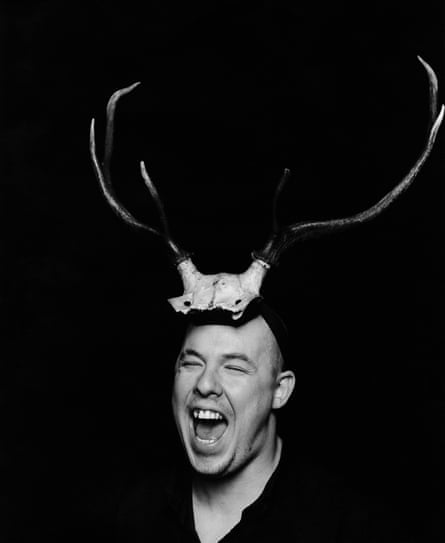
Bolton chose not to include any biographical information in the original New York Savage Beauty because he felt that McQueen’s life was “laid bare in his work for all to see”. There is a purity to this approach and it is surely true that our appreciation of McQueen’s art is not enhanced by knowing the details of his nights – and days, come to that – of drinking and drug-taking, the fights with various boyfriends, the liposuction he resorted to in a desperate attempt to slim down to a more fashionable weight. There is, however, one fact about McQueen’s life that emerges from Andrew Wilson’s biography as a possible key to his creative vision as well as to his final depression. Though not as authoritative as Thomas’s book on McQueen’s place in the world of fashion, Wilson had the benefit of interviews with the designer’s family, which makes his biography the more intimate and affecting of the two. At the age of nine or 10, McQueen started to be sexually abused by a violent man – Terence Anthony Huyler – who was married to his sister Janet. When he later confided in Blow, he said that this man stole his innocence. The young McQueen also watched powerless on several occasions when Janet was beaten or half-strangled by Huyler. Janet, who had no idea that her husband was abusing her little brother, remained close to McQueen all his life, almost like a second mother. Wilson convincingly argues that Janet became “the blueprint” for his clothes, a woman who was “vulnerable but strong”. Sometimes the women on the runway were McQueen himself, other times they were Janet. This, writes Wilson, “was the woman he wanted to protect and empower through his clothes; the patina of armour that he created for her would shield her from danger”.
Except that, as McQueen was all too aware, clothes, no matter how sharply tailored, were ultimately no protection. He bedecked his models in myriad weird accessories to deter potential predators: silvery thorns, Manga-inspired fibreglass helmets, giant antlers underneath a bridal veil, a pony-skin jacket adorned with curved tusks like a gazelle’s. He cut dresses close to the curves of the body and then smothered them in razor clams or pheasant feathers. At other times – as the glass cuirass shows – he used his clothes to show the futility of armour. He made his models strong by dressing them in sharp-shouldered jackets, but then exposed the tender spot at the base of the spine. The year before his death, on holiday in Majorca, he told his former colleague Sebastian Pons that he was planning to use his final collection to kill himself on stage, the ultimate piece of provocative cinema. The plan was for him to appear inside a Perspex or glass box and shoot himself, so that his “brains would drip down the glass”. When they returned from the holiday, Pons contacted McQueen’s office to say how worried he was, but was told “He’s fine”.
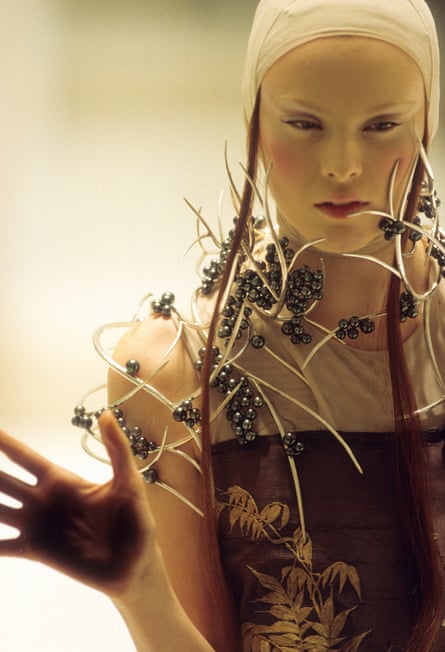
In the end, McQueen’s last full show was a meditation not on death but rebirth and metamorphosis. Plato’s Atlantis, shown at the Palais Omnisports in Paris on 6 October 2009, was based on the mythical lost underwater civilisation and showed the models morphing into a post-human watery species with scaly bodies and “Armadillo” shoes. Claire Wilcox, the curator of Savage Beauty at the V&A, sees it as possibly his “greatest achievement”. For the first time, he decided to discard all previous influences, cinematic or otherwise, and start afresh. The garments in Plato’s Atlantis were complex, even by McQueen’s standards, many of them engineered from a single piece of cloth. He used digital imagery to weave and print dresses whose patterns accurately suggested the “thorax of a moth” or the “precise markings of a snake”. It was as if McQueen was taking the idea of armour a stage further, embedding the protection within the skin itself. For this final collection, he turned one of his models into a blue-scaled “jellyfish” woman, coated from foot to neck in iridescent enamel paillettes, a creature altogether inaccessible to human advances. No one ever covered the body in such beautiful and ingenious ways, but it was still no use. As McQueen himself said, “there’s blood beneath every layer of skin”.

Comments (…)
Sign in or create your Guardian account to join the discussion